
This page last revised 16 August 2006 -- S.M.Gon III
Introduction
Ecoregion
Conservation Targets
Viability
Goals
Portfolio
TNC Action Sites
Threats
Strategies
Acknowledgements
▫
Tables
Maps & Figures
CPT Database
Appendices
Glossary
Sources
.
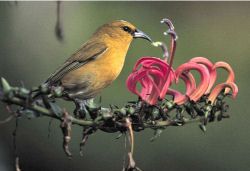
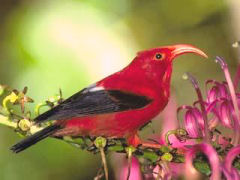
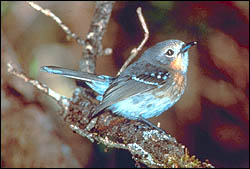
Hawaiian Rare Plant Concentrations
Definition and Viability of Rare Plant Concentrations
A rare plant concentration was recognized if
rare plant density exceeded 16 occurrences per square kilometer AND the high density area extended beyond native
dominated ecological system boundaries. This occurred in only three places:
Kaua‘i, along the Na Pali cliff systems (below), O‘ahu, in the Wai‘anae
Mountains (below, bottom), and on
Rare Plant Concentration: Kaua‘i
 The
vast majority of rare plants on Kaua'i occur within native ecological
systems (lavendar), however a concentration extends outside of these
native areas along the north coast of the island.
The
vast majority of rare plants on Kaua'i occur within native ecological
systems (lavendar), however a concentration extends outside of these
native areas along the north coast of the island.
Rare Plant Concentrations: O‘ahu
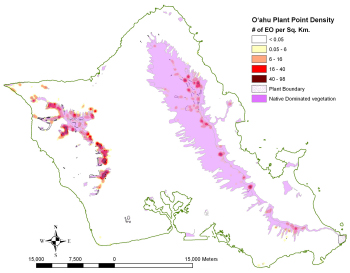 Unlike
on Kaua'i, many of the rare plant concentrations of the Wai'anae
conservation area (western O'ahu) occur outside of native ecological
systems (lavendar), many of which have been greatly reduced and
damaged. They are extremely vulnerable to threats such as fire,
ungulates, invasive weeds, rodents, pathogens, and drought, and are
considered of low viability.
Unlike
on Kaua'i, many of the rare plant concentrations of the Wai'anae
conservation area (western O'ahu) occur outside of native ecological
systems (lavendar), many of which have been greatly reduced and
damaged. They are extremely vulnerable to threats such as fire,
ungulates, invasive weeds, rodents, pathogens, and drought, and are
considered of low viability.
(continued next column)
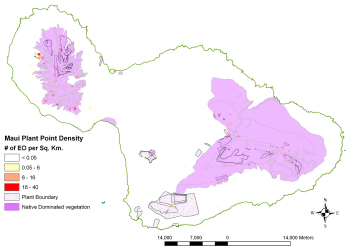
Expert assessment of viability
For the Kaua‘i, O‘ahu andPortfolio decision
A decision was made that there were no viable rare plant concentrations to include in the ecoregional portfolio, but that botanically rich areas such as Kaua‘i and O‘ahu should be recognized as prime locations for conservation agencies with mandates to protect and recover rare and endangered plant taxa and engage in habitat restoration. The rare plant density for the Wai‘anae region of O‘ahu is the highest in the ecoregion.
More information on the rare plant concentrations, such as the specific species in each concentration and data summarizing trends in population, is available in the Conservation Planning Tool database.